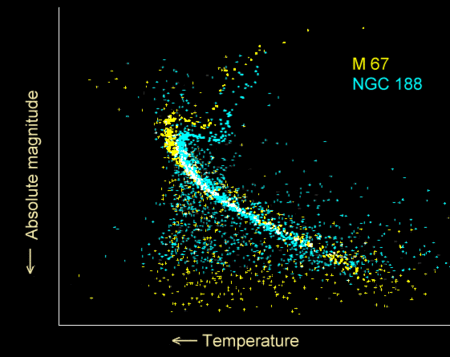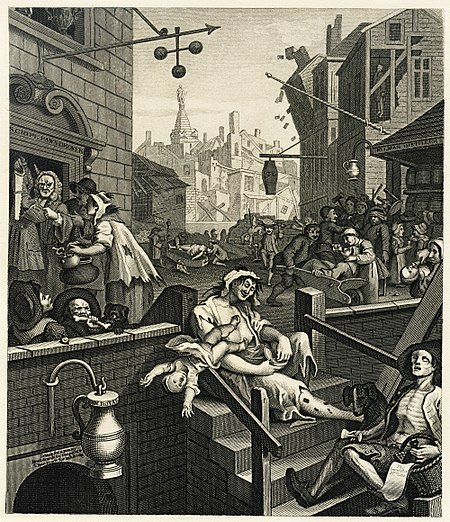Emotional responsivity
|
Read other articles:

Ця стаття потребує додаткових посилань на джерела для поліпшення її перевірності. Будь ласка, допоможіть удосконалити цю статтю, додавши посилання на надійні (авторитетні) джерела. Зверніться на сторінку обговорення за поясненнями та допоможіть виправити недоліки. Матер…

Si ce bandeau n'est plus pertinent, retirez-le. Cliquez ici pour en savoir plus. Cet article ne s'appuie pas, ou pas assez, sur des sources secondaires ou tertiaires (novembre 2023). Pour améliorer la vérifiabilité de l'article ainsi que son intérêt encyclopédique, il est nécessaire, quand des sources primaires sont citées, de les associer à des analyses faites par des sources secondaires. Cet article est une ébauche concernant une compétition cycliste. Vous pouvez partager vos connai…

Pedestrian mall and attraction in Madison, Wisconsin, US State StreetState St. from Library mall, October 2007Length0.78 mi (1.26 km)LocationMadison, Wisconsin, USConstructionConstruction startJune 1974 State Street is a pedestrian zone located in downtown Madison, Wisconsin, United States, near the State Capitol. The road proper extends from the west corner of land comprising the Capitol (on the southwestern edge of the Madison Isthmus, at the corners of Carroll and Mifflin Streets) w…

يفتقر محتوى هذه المقالة إلى الاستشهاد بمصادر. فضلاً، ساهم في تطوير هذه المقالة من خلال إضافة مصادر موثوق بها. أي معلومات غير موثقة يمكن التشكيك بها وإزالتها. (ديسمبر 2018)Learn how and when to remove this message 139° خط طول 139 غرب خريطة لجميع الإحداثيات من جوجل خريطة لجميع الإحداثيات من بينغ تصدير…

1941 prototype fighter aircraft XP-46 Curtiss XP-46 Role FighterType of aircraft Manufacturer Curtiss-Wright Corporation First flight 15 February 1941 Primary user United States Army Air Corps (intended) Number built 2 Developed from Curtiss P-40 Developed into Curtiss XP-53 The Curtiss XP-46 was a 1940s American prototype fighter aircraft. It was a development of the Curtiss-Wright Corporation in an effort to introduce the best features found in European fighter aircraft in 1939 into a fig…

Cet article est une ébauche concernant la microbiologie. Vous pouvez partager vos connaissances en l’améliorant (comment ?) selon les recommandations des projets correspondants. Si ce bandeau n'est plus pertinent, retirez-le. Cliquez ici pour en savoir plus. Cet article ne cite pas suffisamment ses sources (novembre 2022). Si vous disposez d'ouvrages ou d'articles de référence ou si vous connaissez des sites web de qualité traitant du thème abordé ici, merci de compléter l'article…

President of Poland from 2005 to 2010 Lech KaczyńskiOfficial portrait, 2006President of PolandIn office23 December 2005 – 10 April 2010Prime MinisterKazimierz MarcinkiewiczJarosław KaczyńskiDonald TuskPreceded byAleksander KwaśniewskiSucceeded byBronisław Komorowski (acting)President of the Supreme Audit OfficeIn office14 February 1992 – 8 June 1995PresidentLech WałęsaPrime MinisterJan OlszewskiWaldemar PawlakHanna SuchockaWaldemar PawlakJózef OleksyPreceded byWaler…

Gerhard Lagerstråle Född25 februari 1814[1][2]Karlskrona amiralitetsförsamling[1][2], SverigeDöd18 april 1887[1][2] (73 år)Nättraby församling[1][2], SverigeMedborgare iSverigeUtbildad vidUppsala universitet[3][2] SysselsättningPolitiker[2], jurist, domareBefattningLedamot av Sveriges ståndsriksdag (1844–1845)[2]Ledamot av Sveriges ståndsriksdag (1850–1866)[2]Justitieombudsmannen (1857–1858)Konsultativt statsrådRegeringen De Geer d.ä. I (1858–1860)[2]Sveriges c…

Clustering of stars in astronomy diagram The red clump is the prominent group of red giant stars at about 5,000 K and 75 L☉. The red clump is a clustering of red giants in the Hertzsprung–Russell diagram at around 5,000 K and absolute magnitude (MV) +0.5, slightly hotter than most red-giant-branch stars of the same luminosity. It is visible as a denser region of the red-giant branch or a bulge towards hotter temperatures. It is prominent in many galactic open clusters, and it is al…

Cette page concerne l'année 1751 du calendrier grégorien. Chronologies Fort Beausejour en 1755.Données clés 1748 1749 1750 1751 1752 1753 1754Décennies :1720 1730 1740 1750 1760 1770 1780Siècles :XVIe XVIIe XVIIIe XIXe XXeMillénaires :-Ier Ier IIe IIIe Chronologies thématiques Art Architecture, Arts plastiques (Dessin, Gravure, Peinture et Sculpture), (), Littérature (), Musique (Classique) et Théâtre Ingénierie ()…

Ukrainian writer, poet and artist (1814–1861) Taras ShevchenkoТарас ШевченкоPortrait of Taras Shevchenko, by Ivan Kramskoi in 1871Born9 March 1814Moryntsi, Kiev Governorate, Russian EmpireDied10 March 1861 (aged 47)Saint Petersburg, Russian EmpirePen nameKobzarOccupation Poet philosopher painter graphic artist ethnographer activist LanguageUkrainian, RussianNationalityUkrainianCitizenshipRussian EmpireAlma materImperial Academy of ArtsPeriod1832–1861Notable worksKobzarRelat…

Hockey draft 2023 PWHL DraftGeneral informationDate(s)September 18, 2023LocationCBC's Toronto HeadquartersToronto, Ontario, CanadaNetwork(s)CBC GemCBC Sports AppOverview90 total selections in 15 roundsLeagueProfessional Women's Hockey LeagueFirst selection Taylor HeiseMinnesota2024 → The 2023 PWHL draft was the first draft in Professional Women's Hockey League history, and took place on September 18, 2023, at the Canadian Broadcasting Centre in Toronto, Ontario.[1] Minnes…

Universitas BresciaUniversità degli Studi di BresciaJenisNegeriDidirikan1982RektorProf. Maurizio TiraStaf administrasi500Jumlah mahasiswa14.000LokasiBrescia, ItaliaTim olahragaCUS Brescia (http://www.cusbrescia.it/)Situs webwww.unibs.it/ Universitas Brescia (bahasa Italia: Università degli Studi di Brescia) adalah sebuah universitas penelitian negeri di Brescia, Italia. Universitas ini didirikan pada tahun 1982 dan dibagi ke dalam 4 sekolah. Universitas Brescia resmi didirikan pada tahun 1…

Peta infrastruktur dan tata guna lahan di Komune Houéville. = Kawasan perkotaan = Lahan subur = Padang rumput = Lahan pertanaman campuran = Hutan = Vegetasi perdu = Lahan basah = Anak sungaiHouéville merupakan sebuah komune di departemen Vosges yang terletak pada sebelah timur laut Prancis. Lihat pula Komune di departemen Vosges Referensi INSEE lbsKomune di departemen Vosges Les Ableuvenettes Ahéville Aingeville Ainvelle Allarmont Ambacourt Ameu…

Anthony Modeste Informasi pribadiNama lengkap Anthony ModesteTanggal lahir 14 April 1988 (umur 36)Tempat lahir Cannes, PrancisTinggi 1,86 m (6 ft 1 in)[1]Posisi bermain PenyerangInformasi klubKlub saat ini 1899 HoffenheimNomor 27Karier junior2001–2003 Fréjus2003–2007 NiceKarier senior*Tahun Tim Tampil (Gol)2007–2010 Nice 42 (3)2009–2010 → Angers (pinjaman) 37 (20)2010–2013 Bordeaux 52 (13)2012 → Blackburn Rovers (pinjaman) 5 (0)2012–2013 → Bastia (p…

У этого термина существуют и другие значения, см. Свод (значения). Готические своды Сен-Шапель Свод (от «сводить» — соединять, смыкать) — в архитектуре тип перекрытия или покрытия пространства (помещения), ограниченного стенами, балками или столбами — конструкция, кот…

Matisse Thybulle Matisse Thybulle en 2019. Fiche d’identité Nom complet Matisse Vincent Thybulle Nationalité États-Unis Australie Naissance 4 mars 1997 (27 ans)Scottsdale, Arizona Taille 1,96 m (6′ 5″) Poids 91 kg (200 lb) Situation en club Club actuel Trail Blazers de Portland Numéro 4 Poste Arrière / Ailier Carrière universitaire ou amateur 2015-2019 Huskies de Washington Draft de la NBA Année 2019 Position 20e Franchise Celtics de Boston Carrière profess…

Major character of the epic Mahabharata For other uses, see Vidura (disambiguation). Fictional character ViduraPersonal InformationAffiliationKuru dynastyWeaponSwordFamilyParents see Niyoga Vyasa (father)Parishrami (mother) Half-brothers Dhritarashtra by AmbikaPandu by AmbalikaSpouse[[]]ChildrenYuyutsu Unknown twins daughtersRelativesHalf-brother through Vyasa see NiyogaShuka (from Vatikā) This article contains Indic text. Without proper rendering support, you may see question marks or boxes, m…

You can help expand this article with text translated from the corresponding article in French. (December 2008) Click [show] for important translation instructions. View a machine-translated version of the French article. Machine translation, like DeepL or Google Translate, is a useful starting point for translations, but translators must revise errors as necessary and confirm that the translation is accurate, rather than simply copy-pasting machine-translated text into the English Wikipedi…

لمعانٍ أخرى، طالع العين (توضيح). العين تقسيم إداري البلد السعودية التقسيم الأعلى منطقة الرياض السكان التعداد السكاني غير معروف نسمة (إحصاء ) تعديل مصدري - تعديل العين، هي قرية من فئة (ب) تقع في محافظة الدلم، والتابعة لمنطقة الرياض في السعودية. وتبعد العين عن مح…

